Black Women in Science
Women remain underrepresented in science, technology, engineering, and mathematics (STEM). According to the latest report from the National Girls Collaborative Project, women make up only 34% of the STEM workforce with only 16% of engineers being women. Latina, black, and indigenous women represent less than 10% of the STEM workforce.
While it has historically been difficult for women to enter STEM fields, women of color, in particular, have been, and continue to be, excluded. Despite that, women of color have worked to overcome racial and gender barriers and contributed to important discoveries throughout history, and pushed the boundaries of science.
To celebrate Women’s Day and Black History Month, which was in February, today we are highlighting 10 black women in science and recognizing the contributions they made in their respective STEM fields.
Alice Ball (1892-1916) – Chemist
Alice Ball developed the “Ball Method”, the first successful treatment for Hansen’s disease, also known as leprosy. She was the first African American and the first woman to obtain a master’s degree from the University of Hawaii. She was also the first female and African American chemistry professor at the university.
Life
Alice Ball was born in 1892 in Seattle, Washington, as the grandchild of photographer James Ball Sr. who was one of the first black Americans to use the daguerreotype. Her family was middle-class and prominent members of the African American community.
Alice was an excellent student and obtained multiple graduate degrees from the University of Washinton and the University of Hawaii (known then as the College of Hawaii). She earned undergraduate degrees in pharmaceutical chemistry and pharmacy and went on to become the first black person and woman to earn a master’s degree in chemistry at the University of Hawaii. She became the University’s first female chemistry professor at only 23 years old.
Career
Alice Ball worked hard to develop a treatment for Hansen’s disease (leprosy), a disease that had virtually no chance of recovery and was highly stigmatizing. People diagnosed with the disease were exiled to the Hawaiian island of Molokai. The only available treatment at the time was an inefficient use of the oil from the chaulmoogra tree. Ball developed a technique to make the oil injectible so it could be absorbed by the body and treat the disease efficiently.
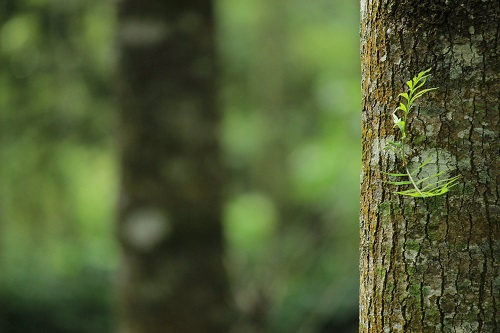
Alice Ball died at 24 of unknown reasons. Due to her untimely death, she was not able to publish her findings and they were stolen by Arthur L. Dean who published the treatment as his own. Her research partner Harry T. Hollman tried to vindicate her by publishing a paper in 1922 crediting her with the treatment and naming it the Ball Method. It wasn’t until the 1970s, though, that professors at the University of Hawaii found Ball’s research and gave her the credit she deserved.
Alice Ball has since been celebrated and honored and her contribution to the treatment of leprosy is globally recognized.
May Edward Chinn (1896-1980) – Physician
May Edward Chinn was the first African American woman to graduate from Bellevue Hospital Medical College, which is now known as New York University (NYU) School of Medicine, and also the first African American woman to intern at Harlem Hospital. She dedicated her career to cancer research and advocating for early cancer screening.
Life
Coming from a less resourceful family, May Edward Chinn did not finish high school. However, she still took the entrance exam to the Columbia Teachers College and matriculated in 1917. Having done her undergraduate and a graduate degree in clinical pathology, she continued to work in the pathology lab when she graduated.
As a black woman, she was unable to get practicing privileges at any hospital in New York. Harlem Hospital was the only hospital in the city that offered her an internship and she was the first black woman to accompany paramedics on ambulance calls.
She soon opened a private practice, as even the Harlem Hospital refused to grant her practicing privileges. She earned her master’s degree in public health from Columbia University in 1933.

Career
During her time at Columbia, she studied cytological methods for cancer detection with George Papanicolaou, who became known for his work on the pap smear test for cervical cancer.
In 1944 she was hired by the Strang Clinic to research cancer and she worked there for 29 years. All her life, May Edward Chinn was an advocate for early cancer screenings and the use of family medical histories to predict cancer risk.
She was awarded membership to the New York Academy of Sciences in 1954, and in 1980 she was awarded an honorary doctorate of science for her work on contributions to medicine by Columbia University.
She died in 1980, aged 84.
Katherine Johnson (1918-2020) – Mathematician
Katherine Johnson was an American mathematician whose calculations were critical for the success of early American spaceflights. She was one of the first African American women to work as a NASA scientist.
Life
Katherine Johnson was born in West Virginia to a teacher and a lumberman, farmer, and handyman. She was strong in mathematics from an early age and graduated from high school at 14. After high school, she enrolled in the historically black college West Virginia State, where she took every math course on offer.
She graduated summa cum laude in 1937 at age 18 with degrees in mathematics and french. In 1939 she enrolled in a graduate math program at West Virginia University, becoming the first African American woman there to attend graduate school.
Career
In 1953 she accepted an offer from the National Advisory Committee for Aeronautics (NACA) which would later become NASA. From 1953 to 1958 she worked as a computer and from 1958 to her retirement in 1986 she worked as an aerospace technologist.
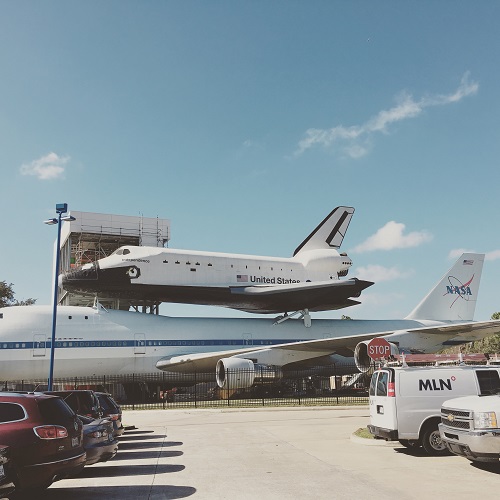
Katherine Johnson calculated the trajectory for the space flight of Alan Shepard, the first American in space, as well as the launch window of his 1961 Mercury mission. When NASA used electronic computers for the first time, Johnson was called in to verify the computer’s numbers – astronaut John Glenn refused to fly without her verification. She also helped calculate the trajectory for the Apollo 11 moon flight in 1969.
In the early days of NASA, women were not allowed to put their names on reports, but after support from Ted Skopinski, Johnson was the first woman to put her name on reports in her division. She has since authored and coauthored 26 research reports.
In 2015 Barack Obama awarded her the Presidential Medal of Freedom, and in 2016 her career was portrayed in the film Hidden Figures. Johnson spent her later years encouraging students, particularly women and minority students, to enter STEM fields.
Jane Hinton (1919-2003) – Veterinarian and Research Scientist
Jane Hinton was one of the first African American women to earn a degree of Doctor of Veterinary Medicine. She is known for co-developing the Mueller-Hinton Agar which is a culture medium essential for testing antibiotic susceptibility in pathogens.
Life
Jane Hinton’s father, William Augustus Hinton, was a successful bacteriologist who developed a widely used test for syphilis and was the first African American to teach at Harvard Medical School and to write a medical textbook. Jane herself studied in schools in Europe before she earned a bachelor’s degree from Simmons College in Boston, Massachusetts, at 20 years old.
Career
After graduating, Jane worked at Harvard Laboratories where she co-developed the Mueller-Hinton Agar with John Howard Mueller. The agar was originally developed to isolate the Neisseria bacteria, which causes gonorrhea and meningococcal meningitis; however, in the 1960s, it was discovered that the agar was suitable for detecting antibiotic susceptibility in pathogens. It has since become the gold standard for antibiotic testing.
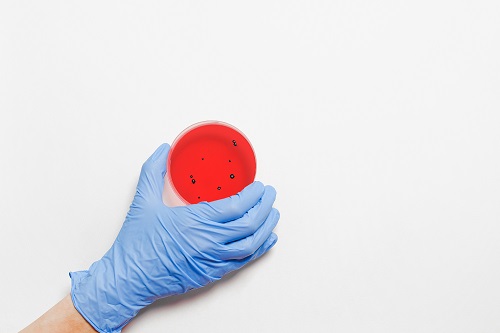
After she completed her laboratory work, Hinton went on to study veterinary medicine at the University of Pennsylvania, where she became the first African American woman to earn a Doctor of Veterinary Medicine degree in the United States. She worked as a veterinarian until 1955, after which she became an inspector with the Department of Agriculture in Framington, Massachusetts.
Jane Hinton died in 2003.
Marie Van Brittan Brown (1922-1999) – Nurse and Inventor
Marie Van Brittan Brown was the inventor of the first home security system, along with her husband Albert Brown in 1966, which served as inspiration for the modern security systems that are used today. She is also credited with the invention of the first closed-circuit television.
Life
Marie Van Brittan Brown was born in Queens, New York in 1922. Brown worked as a nurse and her husband was an electrician. Due to the irregularities of her work schedule and the crime rates in their neighborhood in Queens, Brown was inspired to create the first home security system, as she felt unsafe without her husband at home.
Career
Brown created three peepholes in the door for people of different heights and children and set up a camera that could be adjusted from peephole to peephole to see who was outside. She used a radio-controlled wireless system that could stream to any television in the house and a two-way microphone system to allow for communication between the person inside and outside the door.
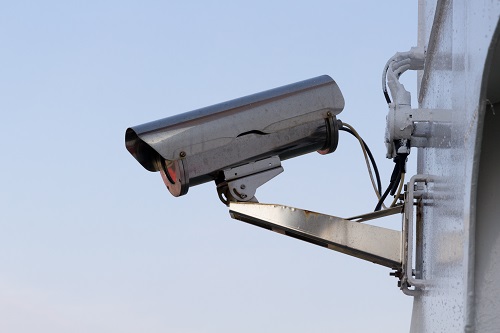
The patent on the security system was granted in 1969 and four days later the New York Times ran an article on Brown’s invention. Although intended for domestic use, the system quickly became popular among businesses due to its efficiency.
Brown’s invention has been cited in at least 32 subsequent patent applications and has led to more CCTV surveillance in public areas. Brown’s system is still used by small businesses, single-family homes, and apartment and condominium complexes.
Brown died in 1999 at 76 years old.
Angella Dorothea Ferguson (1925-) – Pediatrician
Angella Dorothea Ferguson pioneered research on sickle cell disease in African American infants. She developed a blood test to detect sickle cell at birth which has since become the standard in forty American states. She has devoted her life to groundbreaking research on how to diagnose and treat sickle cell anemia.
Life
Born in Washington in 1925, Ferguson grew up as one of eight siblings. Although the family struggled financially, Ferguson earned an undergraduate degree from Howard University in 1945 and a Medical Degree from Howard University College of Medicine in 1949. She joined the faculty at Howard University in 1953.

Career
As a researcher, Ferguson worked to rectify the gap in baseline data for African American children. This is where she discovered a high prevalence of sickle cell anemia among black children and she became one of the first researchers to dedicate her studies to sickle cell disease. Ferguson created guidelines for diagnosing sickle cell anemia in children under 12 using a blood test, and also recommended the increased use of oxygen during surgery for patients with sickle cell. Her sickle cell blood test remains the standard to this day.
She retired in 1990.
Yvonne Clark (1929-2019) – Mechanical Engineer
Yvonne Clark was a trailblazer in mechanical engineering, primarily known for her part in designing the containers Neil Armstrong used to bring Moon samples back to Earth.
Life
Yvonne Clark was born in 1929 in Houston, Texas. She always had a passion for fixing things, such as rewiring lamps and making repairs in the family home. She took an aeronautics course in high school and graduated at only 16. She earned a full scholarship to the University of Louisville in Kentucky which was rescinded after the administration realized she was black. Scared of the legal consequences, the State of Kentucky paid for Clark to attend Howard University in Washington D.C., which is a historically black university.

At Howard, Clark was the only female engineering student in a class of 300. She was the first African American to earn a Bachelor of Science degree in mechanical engineering at Howard University and the first woman to earn a master’s degree in Engineering Management from Vanderbilt University.
Career
Yvonne Clark became an engineering professor at Tennesee State University and used summer breaks to work on engineering jobs, such as recoilless weapons at Frankfort Arsenal, Saturn 5 engines for NASA in Huntsville, and receptacles for moon samples at the NASA Spacecraft Center in Houston.
Clark was an advocate for female participation in STEM and made a great effort to encourage women to become engineers. In 1997, 25% of her students were female.
She died in Nashville in 2019.
Phyllis Bolds (1932-2018) – Physicist
Phyllis Bolds worked for the United States Air Force for more than 30 years, including fifteen years working on the Northrop Grumman B-2 Spirits Stealth bomber. Her work helped the Air Force recognize the importance of varying aircraft vibration frequencies and noises, avoiding equipment malfunctions.
Life
Phyllis Bolds was born in Florida in 1932. She graduated as a valedictorian from Dunbar High School and went on to study physics at Central State College. Soon after graduating with a physics degree in 1954, she was hired by the Wright-Patterson Air Force Base.

Career
Bolds work helped breach the gap in the lack of information about the dynamic operating environments in the design and use of aircraft. Her spectral analyses of aircraft vibrations and noise were instrumental in correcting the adverse effects of the aeroacoustic environment created by aircraft with their weapons bays open.
Bolds was frequently the only woman in the room and in 1970 she attended a symposium at the United States Air Force Academy where she was the only woman out of 350 delegates.
In 1979 she was awarded an Air Force Systems Command Certificate of Merit for her work.
She died in 2018, aged 86.
Wangari Maathai (1940-2011) – Biologist
Wangari Maathai was the founder of the Green Belt Movement and recipient of the 2004 Nobel Peace Prize. She was the first woman in East and Central Africa to earn a doctorate and is internationally recognized for her struggle for democracy, human rights, and environmental conservation.
Life
Born in Nyeri, Kenya, Wangari Maathai earned a degree in biological sciences from Mount St. Scholastica College in Kansas in 1964. She then went on to earn a master’s degree in science from the University of Pittsburgh. She got her Doctorate from the University of Nairobi where she also taught veterinary anatomy.
Career
Maathai became the first female head of the Department of Veterinary Anatomy and the first female associate professor in 1976 and 1977, respectively.
In 1976, she introduced the idea of a community-based planting of trees and developed the idea into a grassroots organization, the Green Belt Movement. The Green Belt Movement focuses on reducing poverty and increasing environmental conservation through tree planting.

Maathai addressed the UN on several occasions and spoke on behalf of women at sessions in the General Assembly during the five-year review of the Earth Summit. In 2004 she won the Nobel Peace Prize.
In 2005 she was elected Goodwill Ambassador to the Congo Basin Forest Ecosystem and in 2006 she founded the Nobel Women’s Initiative. She was named UN Messenger of Peace in 2009 with a focus on the environment and climate change.
Wangari Maathai died in 2011 at 71 years old.
Mae Carol Jemison (1956-) – Physician, Engineer, and Astronaut
Mae Carol Jemison joined NASA’s astronaut corps in 1987 and became the first black woman to travel into space in 1992.
Life
Mae Carol Jemison was born in Alabama in 1956 as the child of a maintenance supervisor and an elementary school teacher. In 1973, she started college at Stanford University at only 16 years old, where she earned her bachelor’s degree in chemical engineering and African American Studies.
Jemison went to Cornell Medical School, where she went to Cuba, Thailand, and East Africa to volunteer and conduct studies. After graduating, she joined the Peace Corps where she served as a medical officer in Liberia and Sierra Leone and worked with the Centers for Disease Control to research vaccines.
Career
She applied to the astronaut program at NASA and was accepted in 1987 as one of only 15 accepted students among more than 2000 applicants. In 1989 she joined the STS-47 crew as a science mission specialist and in 1992 she went into space on the Endeavor among six other astronauts. She spent 8 days in Space and became the first African American woman to travel into space.
In 1993 she left NASA and started The Jemison Group, which is a consulting company that encourages science, technology, and social change. In 1993 she also cameoed on Star Trek, becoming the first actual astronaut to appear on the show.
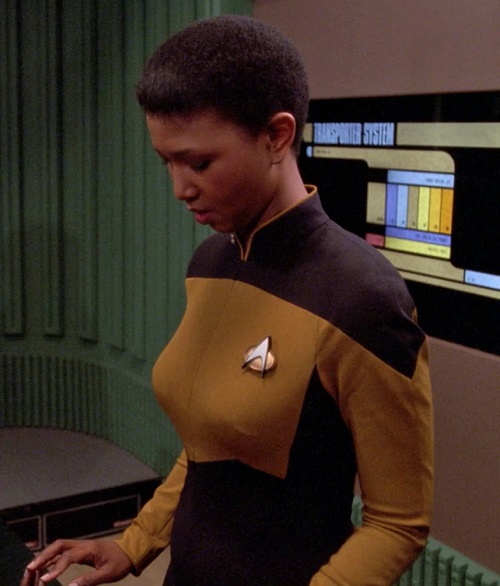
Currently, Jemison is leading the 100 Year Starship project through the United States Defense Advanced Research Projects Agency (DARPA) to ensure that human space travel to another star is possible within the next 100 years. She also serves on the Board of Directors for various organizations.
Mae Carol Jemison is internationally recognized and has been inducted into the National Women’s Hall of Fame.
